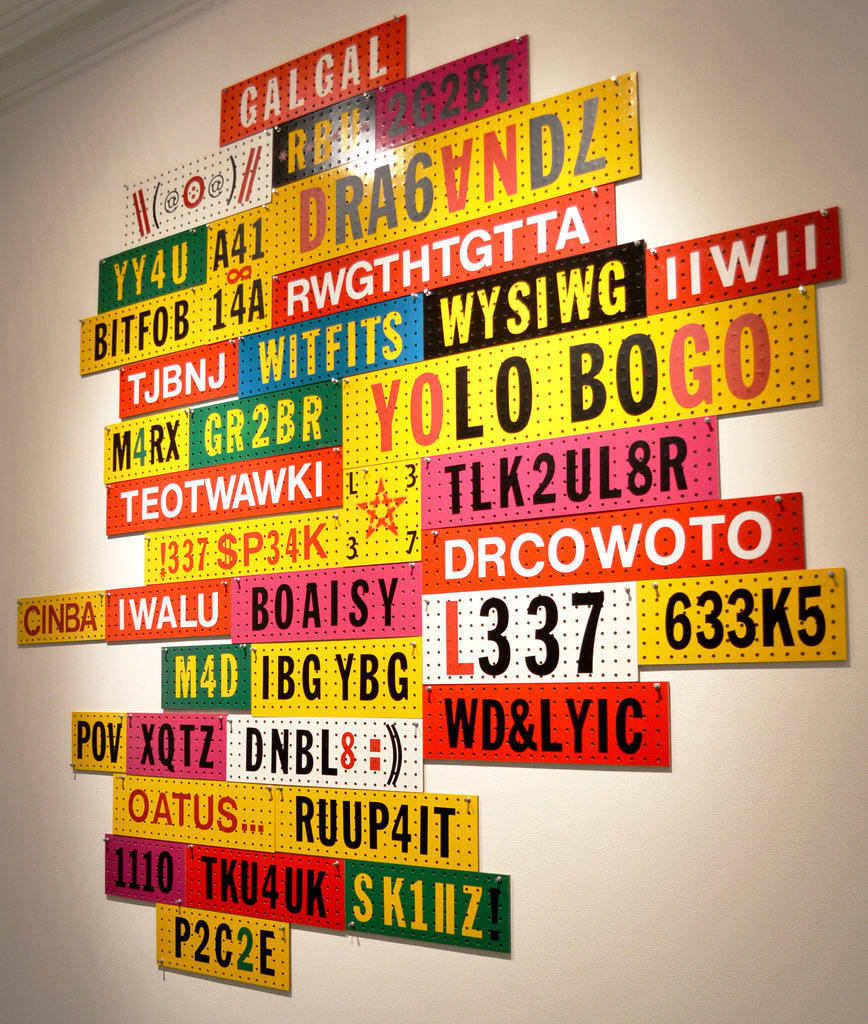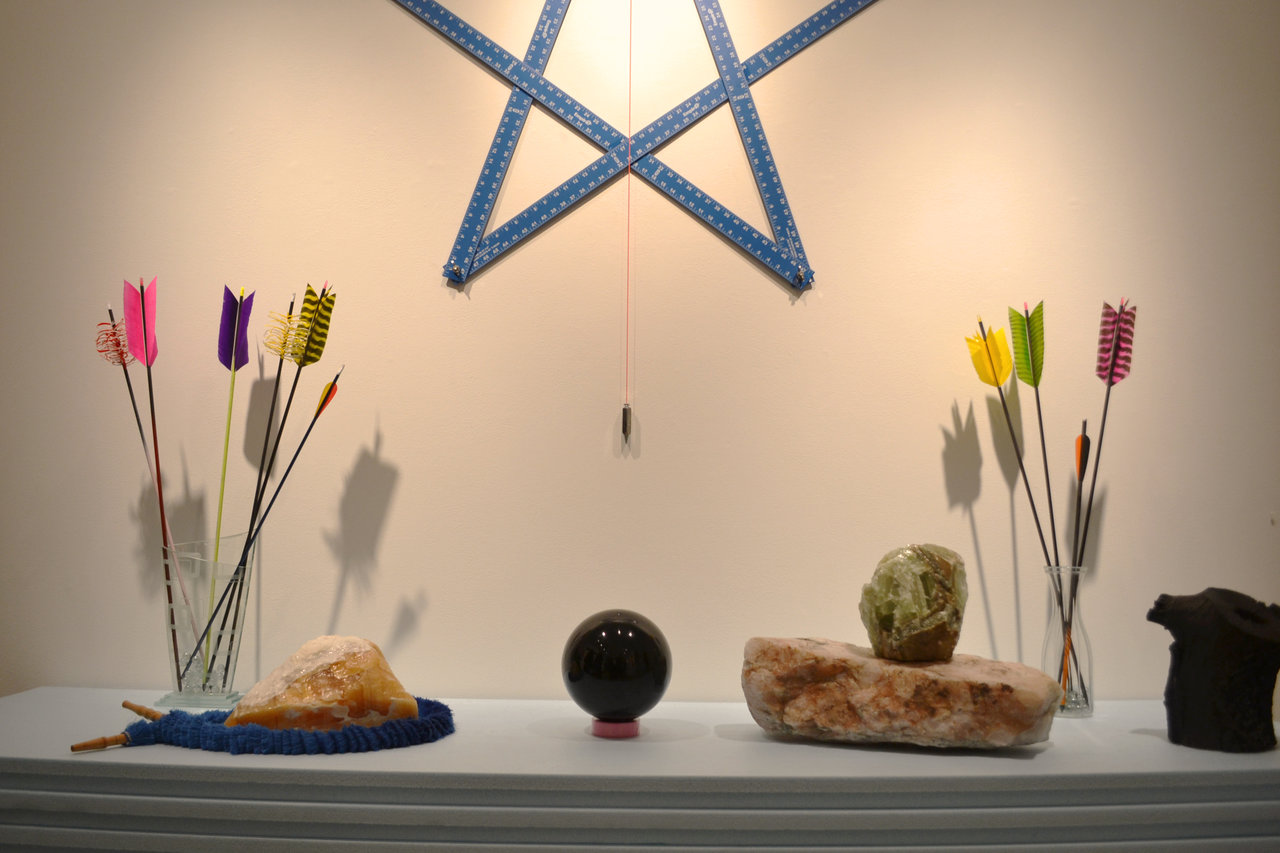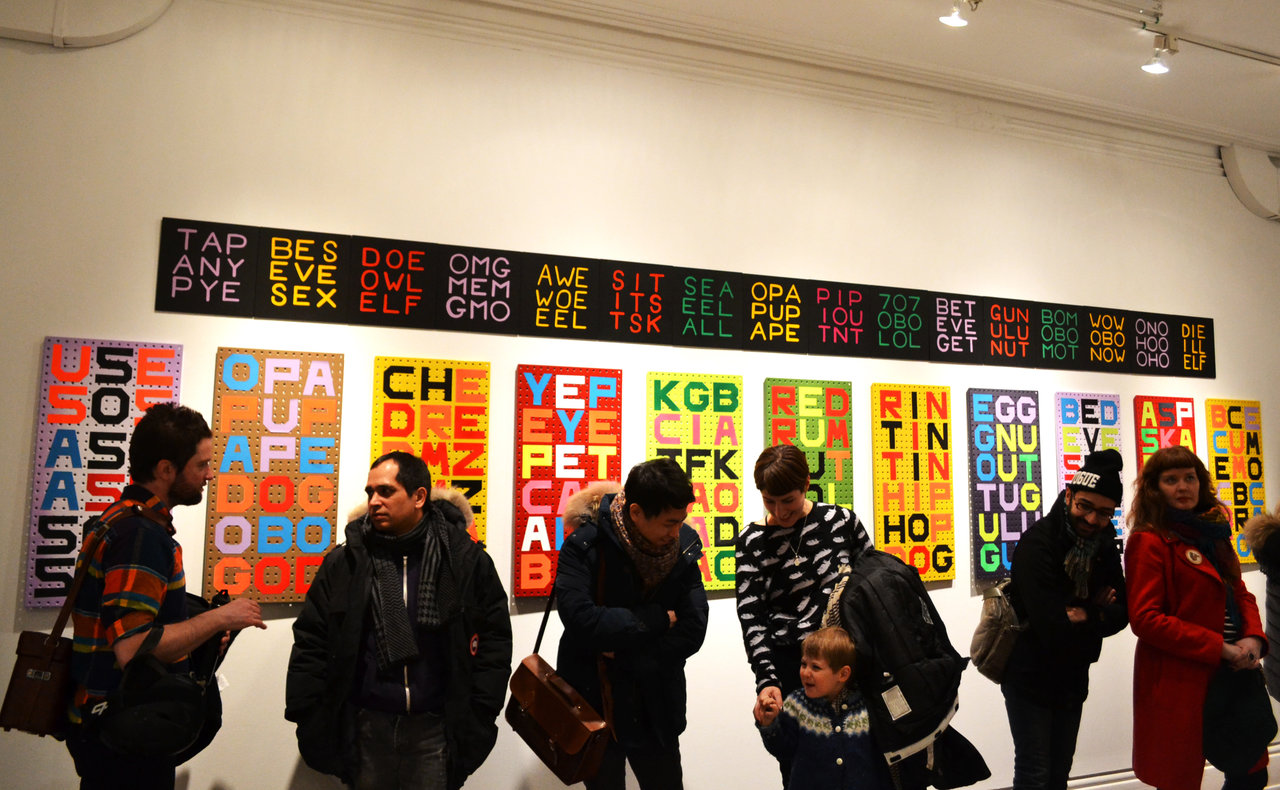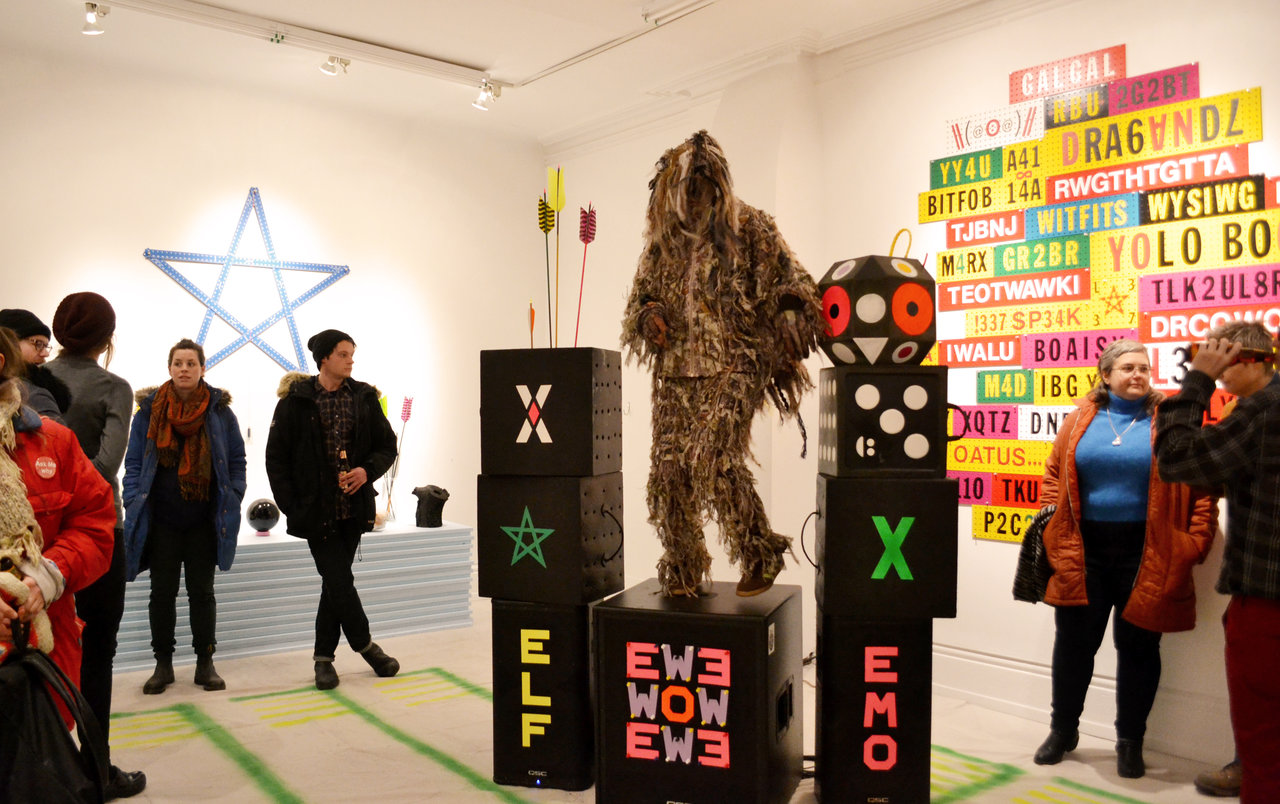 Red Rum Tut Opening Reception on January 16, 2015
Red Rum Tut Opening Reception on January 16, 2015
The allure of witchcraft and the occult has become increasingly popular moving into the modern era. Once feared and persecuted, it has since become a near-global phenomenon perpetuated by cinema, music, art, and literature. Despite the common perception that witchcraft is associated with satanic worship – most likely due to its condemnation from Christians – witchcraft is actually more concerned with the natural elements. The ancient Celtic traditions of druidism, which itself is recognized for its spiritual reverence of nature, were reintroduced in the modern context through the development of the Wicca religion. Wicca in fact has very little to do with the demons or Christianity for that matter. Though magic is an integral part of their beliefs, it is not a supernatural concept; rather it is, as MacGregor Mathers clarifies, “the science of the control of the secret forces of nature.” For instance, the pentacle, one of the most iconic symbols associated with the unholy, is terribly misconstrued. Each of the five points aligns with one of the five elements: fire, earth, air, water, and spirit which unify them all.
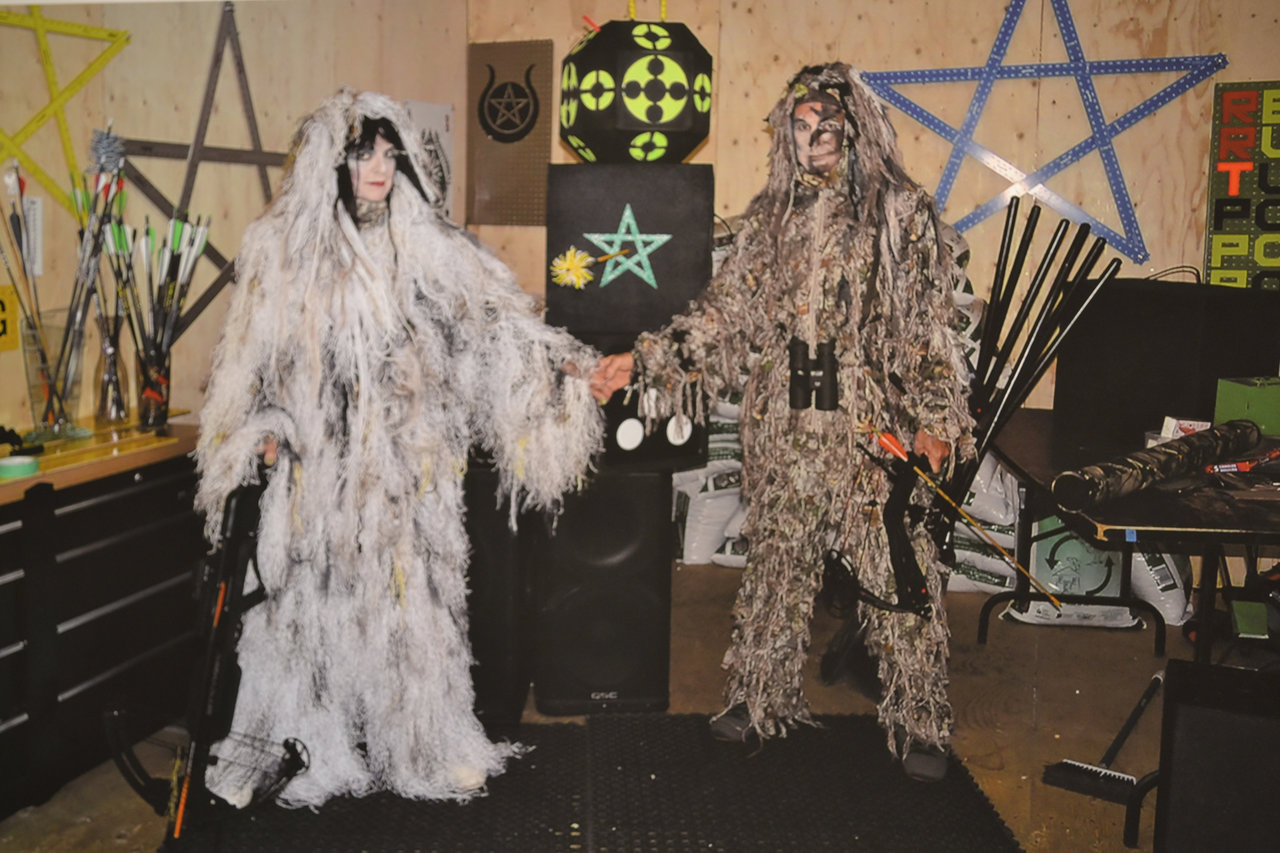 Fastwürms artists Kim Kozzi and Dai Skuse
Fastwürms artists Kim Kozzi and Dai Skuse
However, with society’s modern obsession with advanced technology and our artificial concrete jungles, could the worship of nature cohesively reconcile? Perhaps, it could with a change of context, after all many couldn’t conceive a world without our current innovations. Red Rum Tut is a collaborative exhibition by Fastwürms (artists Kim Kozzi and Dai Skuse) that explores the impact of technology on the creation of a modern pseudo-religion. They free the pedagogical aspect of art and the simplified dialogue of social media from “the tyranny of instrumental and institutional reason” (Paul Petro Gallery website).
Unlike the calm, meditative atmosphere of traditional exhibitions, Red Rum Tut is exceptionally vibrant and lively. The walls are adorned with vividly-colored pieces with an abundance of equally-expressive text: certain panels contain simple three-letter words and acronyms, while others are longer samples of social media jargon (i.e. lol, omg, etc.). In the centre of the room, large speakers are set up to engross the spectators with music as they enter.
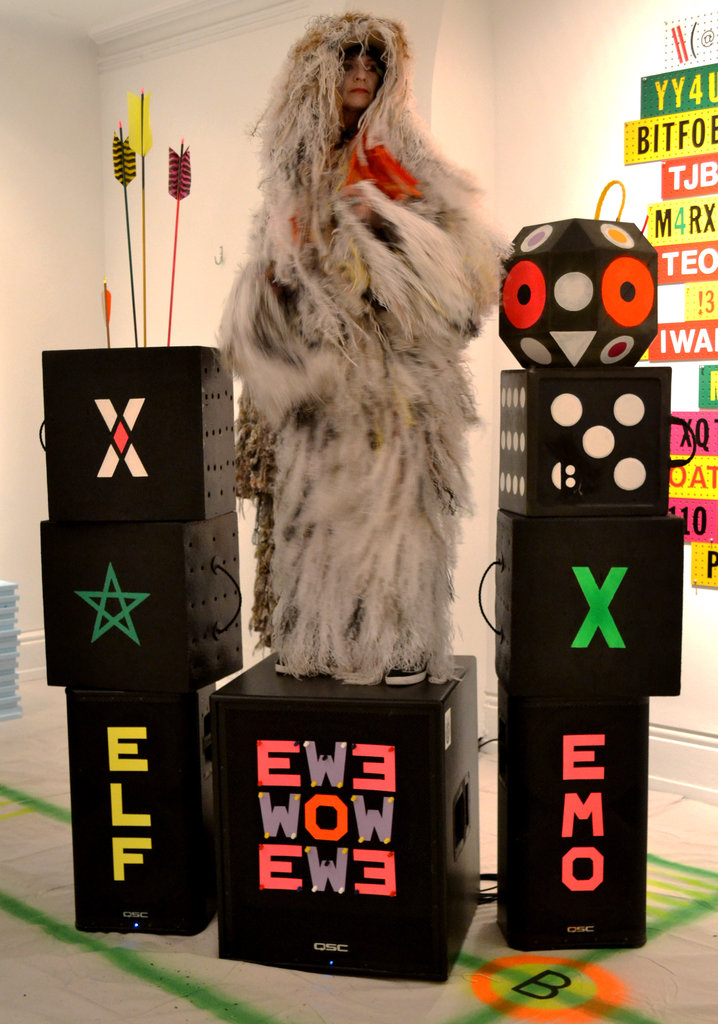 Artist, Kim Kozzi on top of one of the speakers at the Opening Reception on January 16, 2015
Artist, Kim Kozzi on top of one of the speakers at the Opening Reception on January 16, 2015
At the opening reception atop these speakers, one of the artists, dressed in hunting camouflage, dances to the rhythm. Oftentimes, the artists interact directly with the audience, encouraging them to dance along. Despite the jovial nature of the entire exhibit, the decrepit, naturally-colored aesthetic of the camouflage interrupts the scene. To introduce an obscure and almost-earthly being into an otherwise artificial environment seems rather interjecting, as if the being is alien to its new habitat and seems obligated to adapt. Next to them is a table that, suggesting by the overlooking pentacle and the mystifying crystal ball, is a modern Wiccan shrine. However, what might have once contained natural reagents needed for a ritual, instead contains decorative minerals, knitted thread, arrows, and blackened, almost sickly, wood.
In its totality, the exhibit seems to be a constant juxtaposition of the natural and the artificial; the supernatural and the mundane; Wiccan theology with contemporary culture.
Text and photo: Simon Termine
Exhibition information: January 16 – February 14, 2015, Paul Petro Contemporary Art, 980 Queen St West, Toronto. Gallery hours: Wed – Sat, 11 – 5 p.m.

